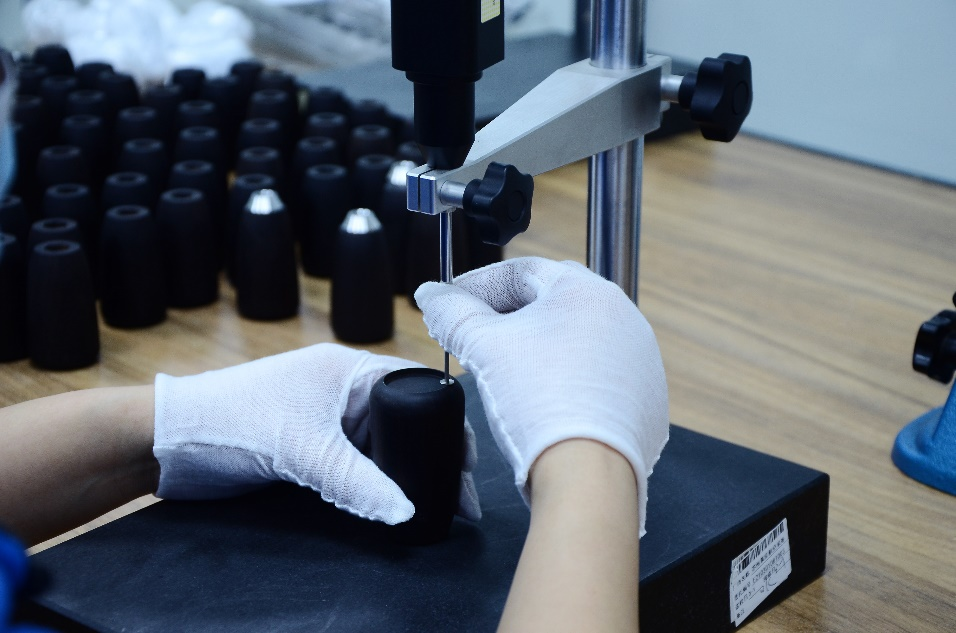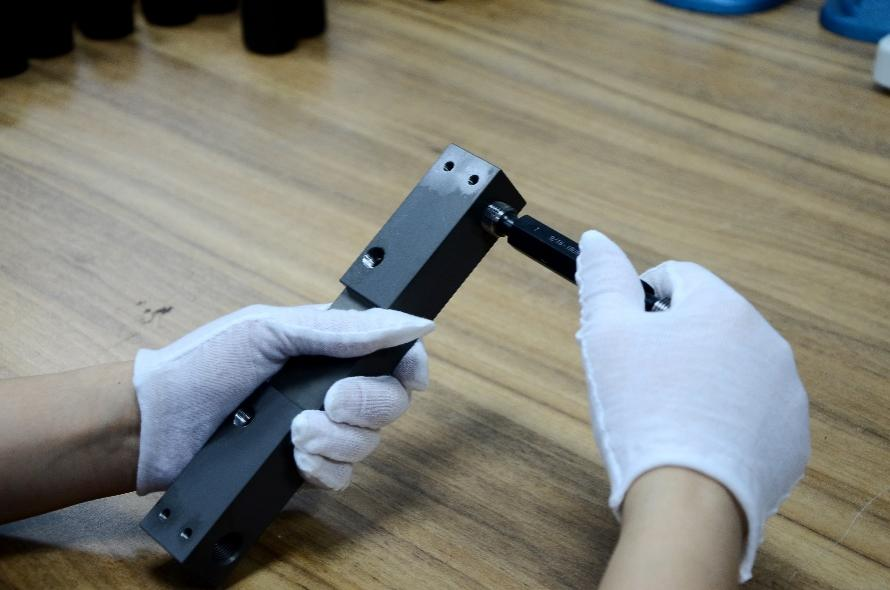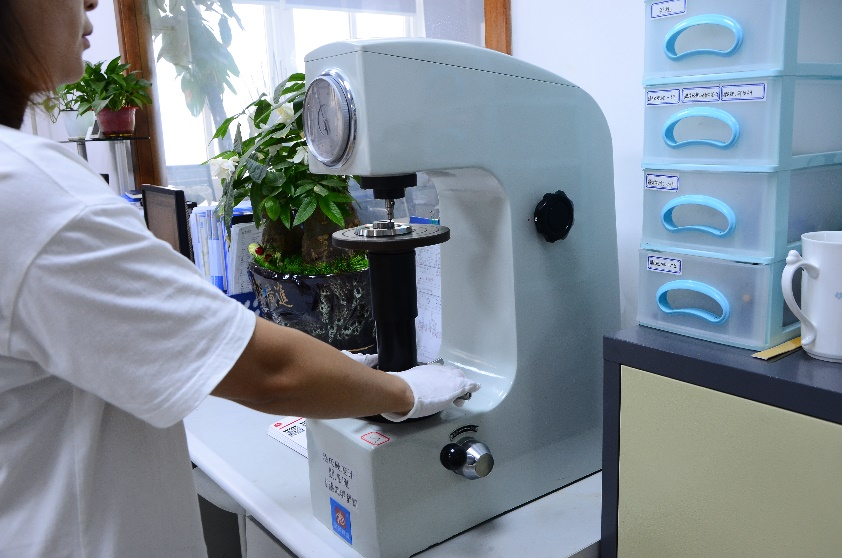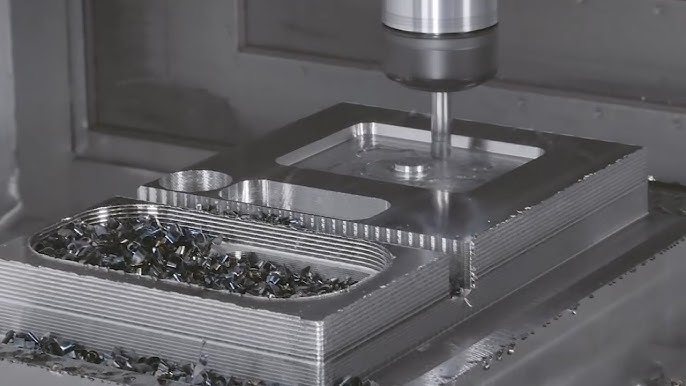In a machine Shop, Quality control (QC) is a detailed verification process, validation, and correction of various products in case of deviations from the specified standards. Quality can also be meeting customer's needs, requirements and exceeding them.
According to the International Organization of Standardization (ISO), QC has been defined as the operational techniques used to comply with quality needs. However, a QC Inspection is a set of activities needed to measure, examine, and test some product features to check their conformity with international standards.
As, Quality control is a general review of items and assembling measures, in CNC machining, quality control is fundamental to guarantee the products produced to adjust to the standards and necessities of the venture, industry, and clients. Likewise, appropriate quality control of CNC parts will keep away from defective items, limit chances, guarantee dimensional precision and quality, monitor the asset, diminish cost, and improve proficiency. Thus, it's valid for both the manufacturers and customers.
The above discussion leads to an effective quality control procedure that needs to be developed to ensure that it abides by all the standards and earns the customer's respect.
The inspection process is an integral part of Quality Control, and it works systematically. Its steps are given as,
- Pre-Process QC Inspection
- In-Process QC Inspection
- Post Process QC Inspection

- Pre-Process QC Inspection:
The safety and efficacy of a final product are dependent on the quality of raw materials being used. The quality is ensured by various physical tests performed on the raw materials. To ensure no quality defects in the products, the raw materials undergo multiple tests. Random samples are taken from the bulk, and quality tests are performed on them accordingly. In preprocessing step of quality control, not only the raw materials are examined, but the examiner tests the prototype for the following,
- To ensure that the raw materials meet international/national standards for quality.
- To check Whether the developmental team has efficiently and comprehensively communicated their requirements and demands to the manufacturing team.
- The equipment that would be used for mass production is the same as that of the prototype.
2. In-Process QC Inspection:
In-process QC Inspection is an important step, as the initial product (in some cases, it may be the first batch) manufactured is inspected for conformity. In this way, any issue raised can be dealt with efficiently and avoided in the final or ready to use products. Despite being an essential step in Quality control, in-process inspection is often overlooked as it requires a technical inspection to detect errors in a finished product. In-process inspection can be further classified into various types such as,
- Tail Run Inspection: Responsible for checking tools and machines before the operation.
- First Of Inspection: Items produced in the first batch or step are inspected concerning the specified standards.
- Decentralized Inspection: Semi-finished goods or products are inspected on production lines or in machines.
- Centralized Inspection: The finished goods are inspected in a specified unit dedicated to quality control.
3. Post Process QC Inspection:
Post Process QC Inspection is the final step of the QC Inspection Process and is performed once all the production is finished for all the products. It is sometimes known as pre-shipment production and is most popular among the importers. The samples are drawn randomly from the whole batch and checked whether they abide by the specified standards or not. After passing this step, the product is sent out for delivery; if failed, they are sent back to the company for changes or sometimes disposed of.
Commonly Used testing equipment:
Following are some of the commonly used equipment in QC Inspection and testing,
- Coordinate Measuring Machine (CMM):
Coordinate Measuring Machine, also referred to as CMM, is a sensitive electronic device used to inspect the dimensions' accuracy. It specifies a reference location and then locates discrete points with respect to that location. These points are then later used to perform dimensionality inspection of the product, whether it abides the specified standards.
A CMM has its role in quality and inspection. It is responsible for inspecting the dimensional characteristics of an object by measuring the dimensions of a single point or whole shape in 3D. It comprises three main axes, i.e., the X, Y, and Z axes, and helps in measurement with precision.
The CMM used at the facility is accurate up to 0.0025 mm.

2. Projector:
A projector is used in the CNC Shop to examine the product on a very minor level visually. It can help visualize the defects by magnifying the dimensions and then applying various inspection techniques to overcome the deficiencies. In the inspection process, projector plays a vital role as it is responsible for visualizing the product more carefully and accurately. The projector used for quality inspection at the shop is accurate up to 0.0005mm.

3. Microscope:
A Microscope is used for magnifying small or micro-level samples into large or macro visuals. It is also responsible for visual inspection of the fault and defect detection in the quality control process. It can be seen widely in Inspection Shops, especially for electronic devices. When shrinks, electronic devices become harder to inspect with the naked eye, so a microscope is used. Moreover, it can also be helpful in the raw materials inspection process. Optical inspection works both ways, i.e., it can be performed as a quick inspection step where a part is removed from the manufacturing process and later inspected by a machine or can be a detailed inspection for any defect. In both cases, the microscope helps in giving an error-free and accurate result.
The microscope at the facility can be accurate up to 0.0005mm.

4. Caliper
A Vernier Caliper is another virtual device from a quality control shop used for checking the outer and inner dimensions of a product with increased accuracy. The accuracy obtained with vernier calipers is more than that obtained with measuring tape or ruler. It can give quick results that are acceptable for many products. It can also provide on-the-go results that can provide a better idea of the product's range in a general sense. The caliper at the shop is accurate up to 0.01mm.

5. Height gauge
A height gauge is a multipurpose device used to find the height of the objects and, in some cases, for marking the things. It is a standard tool for machine inspection shops to find the heights of various ranges and shapes of products with increased accuracy.
The height at the facility is accurate, up to 0.001mm.

6. Thread gauge(Plug gauge and Ring gauge)
A plug gauge can be used to inspect the holes inside diameter, which has been drilled for manufacturing processes. At the same time, A ring gauge is usually used to inspect the outside diameter of a part or product. Both ring and plug gauges are part of the quality control process and enable inspectors, engineers, or manufacturers that whether the specified holes meet or not meet the standards. In addition, they provide quick and accurate (up to some extent) results.

7. Spectrometer
A spectrometer in a quality control process is used to inspect whether a product meets its standards in terms of identity, composition, and purity.
The Spectrometer used at the facility can measure accurately up to 0.2PPM.
8. Sclerometer
A sclerometer is a hardness test quality control apparatus used to check the hardness of a surface. It pushes the tester into the product's surface, which, when penetrates, gives its hardness values. The hardness values obtained are then compared with the standards.

9. Roughmeter
Roughmeter is a surface quality inspection apparatus used to inspect that whether a surface is suitable for specific purposes or not. Rough Surfaces often wear out more quickly than smooth surfaces and are prone to cracks and corrosion. That is why the final product is inspected for its roughness to ensure that the surface is under standards. A roughness tester usually measures in microns.








